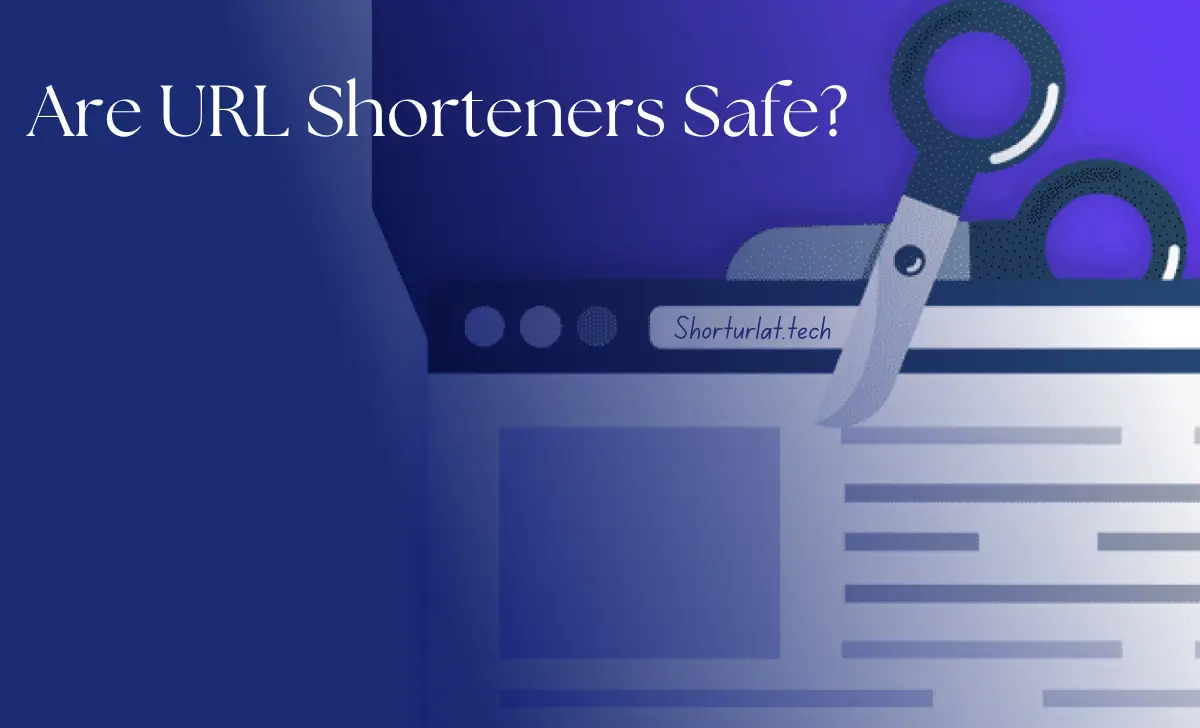
URL shorteners have become a popular tool for sharing links online. They transform long, complex URLs into shorter, more manageable links that are easier to remember and share. While they offer convenience, a common question that arises is: Are URL shorteners safe?
Contents
Understanding URL Shorteners

Before we dive into the safety aspect, let’s briefly understand how URL shorteners work. When you use a URL shortener, you input a long URL, and the tool generates a shorter version. This shorter link redirects users to the original long URL.
Shortening URLs, a process that transforms long, unwieldy links into compact and shareable versions, has become commonplace.
Platforms like ShortURLat, TinyURL, and Rebrandly offer quick and easy solutions for condensing lengthy URLs, making them more appealing for social media posts, emails, and text messages.
However, the convenience of URL shorteners comes with a potential trade-off: security concerns.
The Allure of URL Shorteners
Imagine trying to share a lengthy, complex URL on Twitter, where character limits are strict. It’s a frustrating experience! URL shorteners solve this problem by providing a concise and user-friendly alternative. They also make sharing links easier on platforms like Facebook, Instagram, and WhatsApp, where long URLs can clutter the feed and appear less appealing.
But the ease of use is not the only reason behind the popularity of URL shorteners. They offer several other benefits:
- Brand Customization: URL shorteners allow you to personalize your links with your brand name or logo, enhancing brand recognition and creating a consistent online presence.
- Tracking and Analytics: Many URL shorteners provide detailed analytics, giving you insights into how many people clicked on your links, their location, and other valuable data. This information can be crucial for marketing campaigns and content optimization.
- Link Management: URL shorteners simplify link management, allowing you to track and organize all your shortened links in one central location. This is particularly helpful for businesses and organizations with a large number of online assets.
Potential Risks Associated with URL Shorteners
While URL shorteners offer undeniable convenience, they also present potential risks:
- Phishing Scams: Malicious actors can use shortened URLs to disguise phishing links, leading unsuspecting users to fake websites that steal their personal information. Imagine clicking a shortened URL that appears to be from your bank, only to find yourself on a fraudulent website designed to steal your login credentials.
- Malware Distribution: Shortened URLs can be used to distribute malware, such as viruses and spyware. Clicking on a malicious link can infect your device and compromise your data.
- Tracking and Privacy: Some URL shorteners may track your browsing activity and collect personal data, raising privacy concerns. This information can be used for targeted advertising or even sold to third parties.
How to Stay Safe When Using URL Shorteners
While the risks associated with URL shorteners are real, they don’t have to deter you from using these tools. By following a few simple precautions, you can significantly reduce your chances of falling victim to malicious activities:
- Hover Over the Link: Before clicking on a shortened URL, hover your mouse over it. Most browsers will display the actual destination URL in a tooltip, allowing you to verify its legitimacy.
- Use Reputable Shorteners: Stick to well-known and trusted URL shortening services like Bitly, TinyURL, and Rebrandly. These platforms have established security measures and are less likely to be used for malicious purposes.
- Check the URL Carefully: Pay close attention to the shortened URL. Look for any typos or suspicious characters that might indicate a fraudulent link.
- Be Wary of Unfamiliar Links: Exercise caution when clicking on shortened URLs from unknown sources. If you’re unsure about the link’s legitimacy, it’s best to avoid clicking on it.
- Use a URL Scanner: There are online tools that can scan shortened URLs for malware and phishing threats. These tools can help you identify potentially dangerous links before you click on them.
Tools to Check if a Website is Safe
- Link Unshortener – This tool helps you expand short links, showing you where the link actually leads before you click on it.
- URL Void – A service that helps identify websites that may be dangerous or harmful.
- Virus Total – Analyzes files, websites, IP addresses, and links to detect malware or security issues, sharing the results with the security community.
- NetCraft – Provides information about the technology and structure behind any website using its data-mining results.
- Google Transparency Report – Google’s Safe Browsing technology checks billions of websites daily for threats. It identifies unsafe sites, showing warnings on Google Search and web browsers, and lets you search if a site is currently dangerous.
Conclusion
URL shorteners can be a valuable tool for sharing links online, but it’s essential to use them cautiously. By following the tips mentioned above, you can significantly reduce the risks associated with shortened URLs and ensure your online safety.
Remember: While most URL shorteners are legitimate, there’s always a risk of encountering malicious links. Exercise caution, be aware of potential threats, and prioritize your online security.
FAQs
-
Are all URL shorteners unsafe?
No, not all URL shorteners are unsafe. Reputable services like Bitly, TinyURL, and Rebrandly have strong security measures in place. However, it’s always wise to exercise caution and use a URL scanner to verify the legitimacy of a link before clicking on it.
-
How can I tell if a shortened URL is safe?
You can check the actual destination URL by hovering your mouse over the link. If the destination URL looks suspicious or unfamiliar, it’s best to avoid clicking on it. You can also use a URL scanner to check for malware and phishing threats.
Leave a Reply